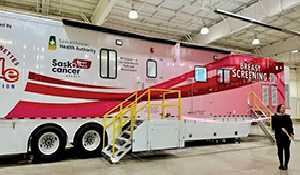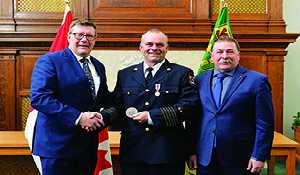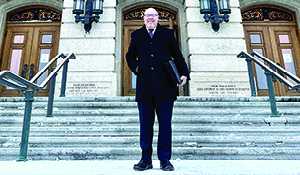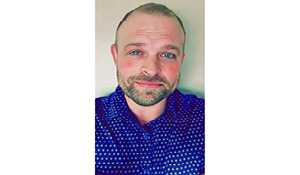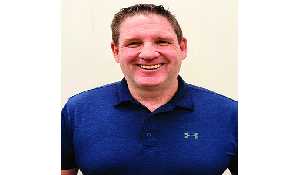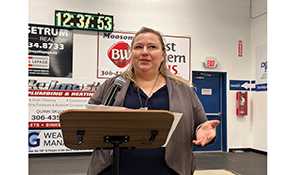Firearms ban isn’t the answer to gun violence says supplier
May 23, 2020, 5:44 am
Rob Paul
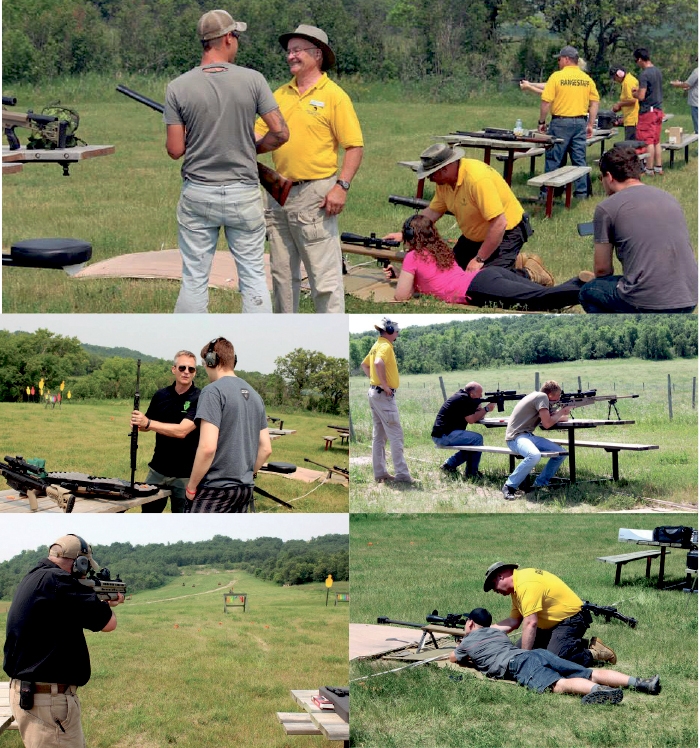

With Prime Minister Justin Trudeau enacting a gun ban in Canada through an order-in-council, there are people throughout the country unhappy with both the ban and the process through which it came about.
The gun ban will prohibit military-grade assault-style weapons and covers 1,500 types of firearms while also now allowing for licensed gun owners to sell, transport, import, or use these types of guns in Canada. There are estimated to be over 100,000 of these banned firearms in Canada.
There are still more details to come on the gun ban, but there will be a two-year amnesty period for owners of these firearms to comply and it will involve a buyback program that Trudeau says he will pass legislation on in the future to provide fair compensation to gun owners.
Owners of these firearms have until April 30, 2022 to follow the ban and could face sanctions under the criminal code if they don’t — there will also be a process to have a firearm grandfathered in, but details have yet to be released on it.
Many have questioned why the government’s resources are going towards a gun ban that targets law-abiding citizens with legal firearms and not towards the avenues that could help with gun violence by targeting the illegal weapons being brought into Canada.
Not only will the gun ban impact firearms owners in Canada, but it’s going to put suppliers in a tough situation.
“It’s going to impact us tremendously” said Wolverine Supplies President Matt Hipwell. Wolverine Supplies is located on River Valley Road in Virden.
“Our opening estimate is approximately 25 per cent of our sales once the dust settles. The finer details are not known because there are so many unknowns regarding the order-in-council.”
When Hipwell saw the details around the firearm ban and how the government is choosing to deal with gun violence in Canada, he was shocked.
“It was a feeling of dismay and disbelief,” said Hipwell. “It only focuses on law-abiding firearms owners and does not make society safer. There’s nothing in that order-in-council that aids police, increases border security, gets to the root cause of the violent crimes such as mental health issues and social conditions. There’s nothing in there for resources for policing.”
“I’m in support for enhancing Canadian security and making society a better place to live, but someone has to explain how that order-in-council did that. There’s nothing there, it only hurts those law-abiding firearm owners that are vetted each day on CPIC (Canadian Police Information Centre) to ensure they haven’t broken the law, who follow the storage and transportation rules, and have lawfully and legally purchased their firearms.”
“Now, with seven signatures behind closed doors, apparently this is going to make society safer. Then, they’re going to buy it back using your tax dollars,” said Hipwell.
The process of how the firearms ban went through rubs Hipwell — and many others — the wrong way, with an order-in-council not allowing for it to go through the legislative process.
“It circumvents our legislative system,” said Hipwell. “An order-in-council requires seven signatures behind closed doors. The legislative process is overlooked and that’s not why we have a democratic society.”
There’s confusion around the process and understanding of firearm use in Canada says Hipwell, and the order-in-council didn’t allow for the proper platform to have an educated debate in Parliament.
“There’s absolutely a lack of information and a lack of education,” said Hipwell. “And by using an order-in-council they get through it with no debate, no due process in Parliament. They circumvent everything in society. Order-in-council they use in a time of emergency. It’s for critical times i.e. an act of war.”
With the firearms ban coming on the heels of the Nova Scotia mass shooting, Hipwell thinks there’s a miseducation on the situation because the shooter didn’t have a firearms license and therefore this wouldn’t impact him.
“My understanding, from phone calls I’ve had and information I’ve been told, this would have not prevented what happened in Nova Scotia,” said Hipwell. “He didn’t have a firearms license to begin with and this order-in-council only focusses on people who have firearms licenses. That wouldn’t have prevented him.”
“The firearms he had — we’ve been told — were smuggled into Canada. How does impacting my legally owned firearms prevent someone from smuggling across the U.S. border into Canada? The government used the tragedy in Nova Scotia to appease the public and mislead them at the same time, because based on the information we’ve been told, this order-in-council would not have prevented what happened in Nova Scotia.”
Like many legal firearms owners, Hipwell doesn’t understand why the firearms ban is targeting law-abiding citizens when the resources could be going to more important issues around gun violence.
“We have to get to the root cause,” said Hipwell. “It’s like anything — when you build a house you don’t build the roof first. We’ve got to start with the foundation. We need to focus on the root cause of these issues. Border security — our open borders are allowing all kinds of products and things to come across unencumbered.”
“We need to look at mental health issues and social conditions and that side of things when it comes to individuals involved in violent crime and organized crime. The resources for policing — we all know even in the rural area, there’s a limited number of police officers and many miles to cover and borders that have to be covered along with it.”
“Where is the support for our law enforcement community? Where was the support for your judicial system? We have a revolving door judicial system, we hear that all the time with violent criminals being released as soon as they’re charged,” said Hipwell. “At one point last year there were 300 individuals charged with firearm related offences in the city of Toronto all released on bail. You want to stop violent crime and you put them back out on the street? I beg to differ that many of those are repeat offenders and many of those will already have conditions on them like not to posses a firearm or are prohibited from owning firearms. So why are those people being released back into society?”
Hipwell says the process to become a legal firearms owner in Canada is extensive and firearms owners are constantly monitored to allow for only law-abiding citizens to legally purchase and use guns.
“To start off you have to be 18 years of age and you have to complete your Canadian firearms safety course,” said Hipwell. “There’s two courses and there’s two parts to each course. For a non-restricted firearm — essentially your long-barrelled rifles and shotguns — that’s an eight hour classroom course plus testing that’s both practical and written. For restricted firearms — such as a handgun — there’s an additional course that if you take back-to-back is six hours because of overlapping material and separately it’s eight hours with two separate parts for testing.”
“Once you successfully pass that then you must apply for your license. You have to have a photograph, complete the paperwork, one guarantor for your photograph, two references, list your marital status because your spouse usually gets contacted. Those checks are completed by the RCMP through the Canadian Firearms Program, they oversee it.”
“Once that’s all done and that application is submitted and the background checks are done, approximately 10-16 weeks later you get your firearms license,” said Hipwell. “We’re almost up to an 18 week wait and once you get that you can go to a business and you will purchase your first firearm. You need to produce your firearms license and the business will check online to make sure it’s up to date. With restricted firearms, that has to be phoned in and transfers are done because you must also belong to a shooting range because restricted firearms can only be used on an approved range.”
“There’s lots of steps in there and the part that people don’t know is that all our firearms licenses are run every 24 hours through CPIC,” said Hipwell. “To make sure that we haven’t broken the law.”
Using the order-in-council to have the firearms ban implemented sets a scary precedent says Hipwell and that’s the biggest issue with the situation.
“The big point to realize here is they used an order-in-council to create these regulations while skipping our parliamentary process,” said Hipwell.
“They could do it tomorrow for motorcycles now. It takes seven signatures behind closed doors. Motorcycles, well they’re two wheels, dangerous, there’s more death on motorcycles than four-wheeled vehicles so we don’t need them in society. And no one can object.”






